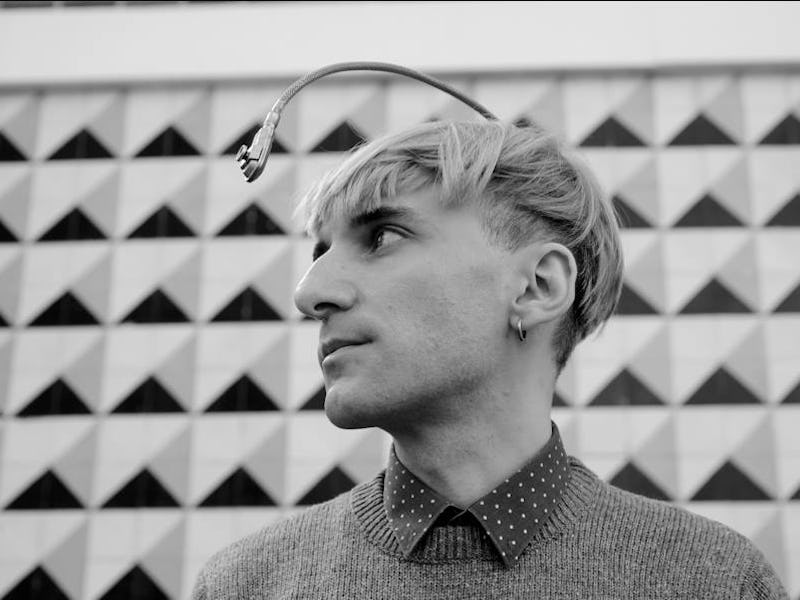Cyborg Neil Harbisson Says Our 3D-Printed Spacemen Surrogates Will Roam Planets for Us
Harbisson can sense colors beyond the visible light spectrum.

Neil Harbisson, the world’s first government-recognized cyborg, believes the day is coming where people will print themselves out on other planets and, using sense-extending attachments, transport themselves to far-flung corners of the universe.
Harbisson was born color blind, but he now has an antenna coming out of his head that allows him to sense colors beyond the visible light spectrum. Speaking at the Washington Post’s “Transformers” event on Wednesday, Harbisson explained that his antenna can receive colors from anywhere in the world through an internet connection.
Five of his friends, based around the world in different continents, can send Harbisson colors from their smartphone. His friend in Australia, for example, can send pictures of a sunset. If he’s asleep, he’ll dream about them. “My friends can actually intervene in my dreams,” he said.
The British government recognizes him as a cyborg; authorities allowed him to apply for a passport with a photo that shows his antenna attachment.
Harbisson speaking at the Transformers conference.
Harbisson has begun training himself to connect his mind permanently to outer space. He connects to a live feed of the International Space Station for two hours every day, but he says it will take about two to three years before he can permanently connect, as he needs to get used to the broader range of colors Harbisson says he can see in space.
If his experiment is successful, Harbisson envisions a world where humans can send 3D printers to planets, then use those printers to copy versions of themselves. The copies will be controlled by cyborg enhancements by people on Earth, but the direct interface with the body will mean being able to actually feel what the copy feels. “We’ll be able to explore space by sending our mind to space,” he said.
Cyborg modifications will grow more mainstream in the coming years, according to Harbisson. He compared the current state of affairs, where cyborg modifications are done by underground surgeons, to the fifties and sixties, where transgender operations were also performed underground before becoming a more mainstream procedure.
What these new enhancements will consist of is still unclear. 30-year-old Moon Ribas can sense seismic activity anywhere in the world, feeling the earth’s movements in her body thanks to a small magnet implanted near her elbow. “She’s used to feeling earthquakes of the world,” Harbisson said.
Harbisson mentioned the possibility of a cyborg enhancement that gives people the ability to feel magnetic north. This enhancement brings humans a sense that animals in the natural world have, opening up the possibilities to add in extra existing senses that humans have lacked before now.
“Creating senses is an art,” Harbisson said. “It’s cyborg art.”